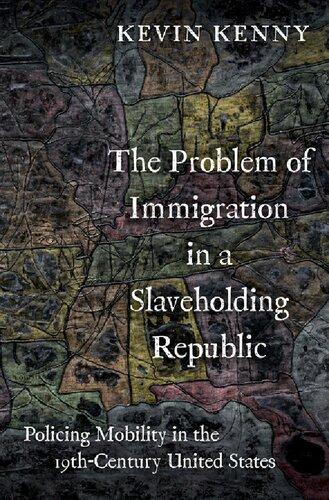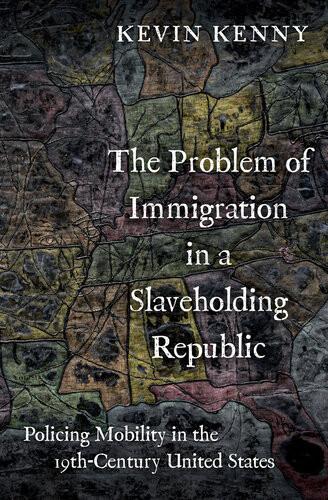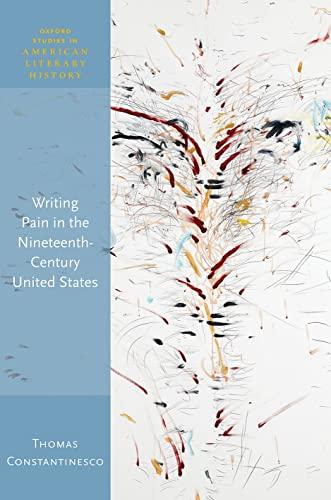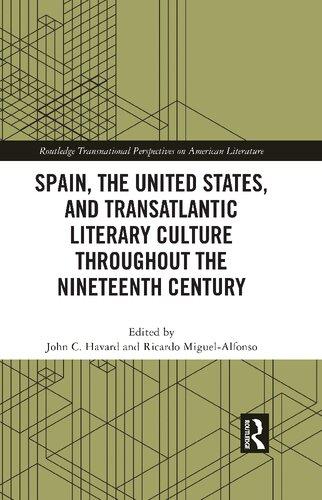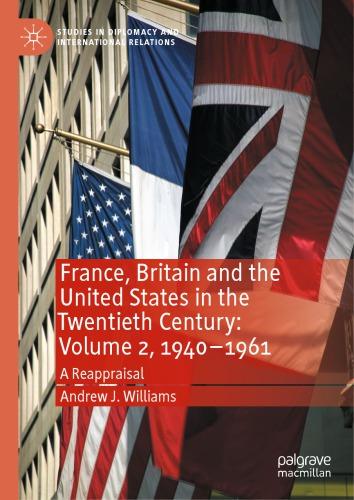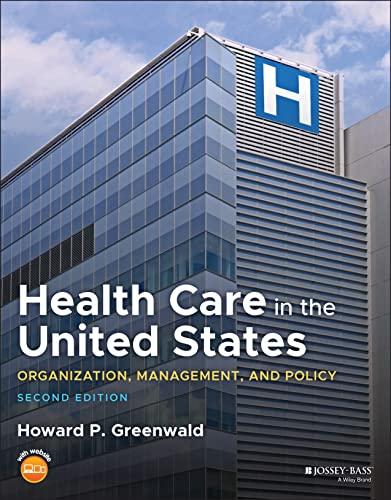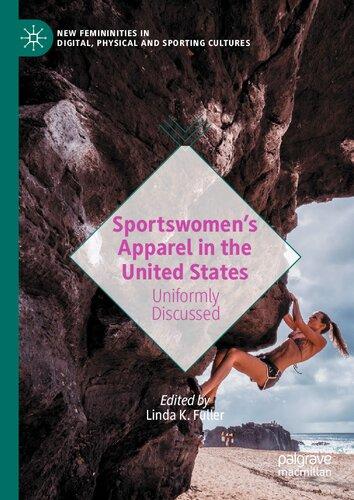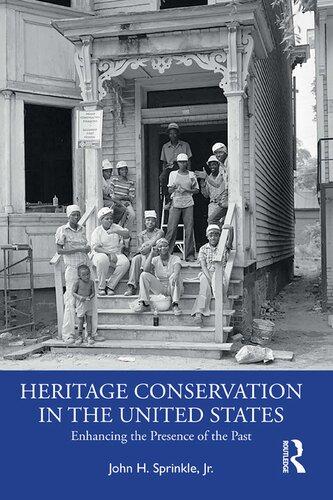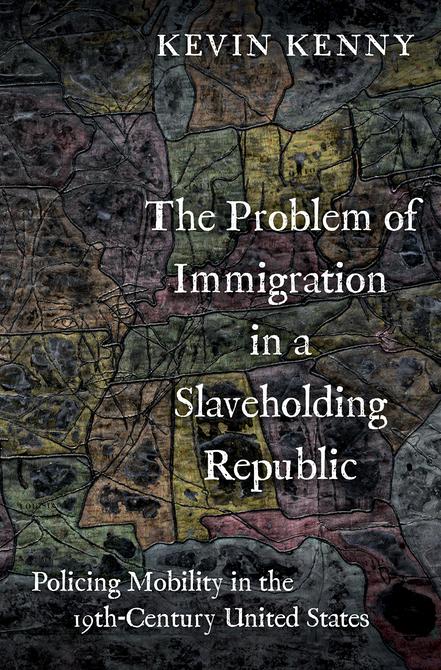The Problem of Immigration in a Slaveholding Republic
Introduction
In the United States today, the federal government controls immigration by deciding who to admit, exclude, or remove. Yet in the century after the American Revolution, Congress played only a very limited role in regulating immigration. The states patrolled their borders and set their own rules for community membership. In the Northeast, they imposed taxes and bonds on foreign paupers. In the Old Northwest (today’s Midwest), they used the same methods to exclude and monitor free black people. Southern states policed the movement of African Americans, both free and enslaved, and passed laws imprisoning black sailors visiting from other states or abroad. These measures rested on the states’ sovereign power to regulate their internal affairs. Defenders of slavery supported fugitive slave laws but resisted any other form of federal authority over mobility across and within their borders. If Congress had the power to control immigrant admissions, they feared, it could also control the movement of free black people and perhaps even the interstate slave trade. Immigration, in other words, presented a political and constitutional problem in a slaveholding republic.
The Civil War and the abolition of slavery removed the obstacles to a national immigration policy. In two cases heard in 1875, Henderson v. New York and Chy Lung v. Freeman, the Supreme Court declared that the era of state immigration control was at an end. Yet it would be a mistake to think that, in the absence of slavery, Congress would have regulated—let alone restricted— European immigration earlier. Following the example set by the states, Congress might have excluded vulnerable newcomers, just as it did when it passed the first general immigration act in 1882. But nobody before the end of the nineteenth century—not even the Know-Nothings in the 1850s—wanted to restrict European immigration numerically. Some nativists in the antebellum era called on Congress to extend the waiting period for naturalization
or to regulate migration by paupers, but to no avail. Admission was the norm for Europeans, and it remained so until the 1920s. Even though the abolition of slavery cleared a path for the emergence of a national immigration policy, in other words, it did not make that policy inevitable.1
The catalyst was the arrival in the United States of significant numbers of immigrants from China. Starting in the 1870s, the federal government excluded Chinese laborers on antislavery grounds, deploying techniques of registration, punishment, and deportation first used to police free black people in the antebellum South. To justify these measures, the Supreme Court ruled in the Chinese Exclusion Case of 1889 that the federal government’s power over immigration was inherent in national sovereignty and required no constitutional justification. This book explains how the existence, abolition, and legacies of slavery shaped immigration policy as it moved from the local to the federal level over the course of the nineteenth century. In so doing, it reveals the tangled origins of the national immigration policies we take for granted today.2
Although the federal government did not regulate admissions before the Civil War, it controlled three other kinds of population movement that intersected with immigration in important ways: the return of fugitive slaves, the removal of free black people overseas, and the expulsion of Native Americans to the continent’s interior. The fugitive slave clause of the US Constitution required that persons “held to service” who escaped from bondage must be “delivered up on Claim of the Party to whom such Service or Labour may be due.” Congress passed legislation to this effect in 1793. In Prigg v. Pennsylvania (1842), the Supreme Court ruled that the 1793 federal statute took precedence over a state law that made it a felony to remove “any negro or mulatto” with a view to enslaving them. Northern states responded by passing more stringent “personal liberty” laws to protect free black people and escaped slaves, while southern slaveholders demanded stronger federal legislation to secure their property rights. Congress then passed a sweeping new law in 1850, allowing enslavers or their agents to arrest suspected fugitives and take them before a wide range of officials who issued certificates of removal. No fugitive was allowed to testify in any trial or hearing under this law. With its system of forced and arbitrary removal and its lack of due process or judicial oversight, the Fugitive Slave Act of 1850 prefigured the mechanism for deporting immigrants introduced at the federal level in the postbellum era.3
The federal government supported the removal of free African Americans overseas. Some left voluntarily, for Haiti, Canada, or Africa, but most were removed through the so-called colonization movement. Colonization was not emigration. Even when voluntary, its purpose was to expel free black people on the grounds that they could never achieve civil or political equality in the United States. In other words, the colonization movement was a form of social engineering based on race. The American Colonization Society, founded in 1817 as a semi-public enterprise funded in part by the Monroe administration, transported about 11,000 people, most of them formerly enslaved, to Liberia. Some African Americans initially saw advantages in voluntary departure; none supported compulsory removal.4
The federal government also forcibly relocated Native Americans. The Indian Removal Act of 1830 created the machinery that expelled more than 80,000 people from the Southeast to locations beyond the Mississippi River. For a moment, it looked as though Chief Justice John Marshall might halt the process. In Worcester v. Georgia (1832), Marshall defined Native American nations as “distinct, independent political communities,” subject to the jurisdiction of the federal government but not the states. Marshall’s decision, however, lacked an enforcing mechanism and did nothing to prevent the expulsion of Native Americans from their homelands. In United States v. Rogers (1846), Roger Taney’s Court rejected Marshall’s position, ruling that Native tribes were not sovereign communities but collections of individuals bound together by race, endowed only with those rights the federal government chose to confer on them. These two principles—tribal autonomy versus minority status—operated in uneasy tension until the 1870s, when Congress discontinued the practice of making treaties with Native tribes and nations. The Rogers decision gave Congress a plenary power largely immune from judicial review, laying the groundwork for immigration policy as well as Native American policy in the postbellum era.5
When it came to admitting or removing immigrants, Congress played almost no role before the Civil War. Towns and states controlled admissions and expulsions. Under the Constitution, each state retained sovereignty over matters on which it had not surrendered power to the national government, including mobility within and across its borders. Towns and states used their police power to regulate admissions and expulsions. Today the term “police” refers to a body of people charged with keeping public order and investigating crimes. In the nineteenth century, police had a related but broader meaning, referring to the right of local communities to regulate the health, safety, morals, and general welfare of their residents. State and local
governments passed laws and ordinances that prohibited the arrival of foreign convicts; required ship captains to post bonds or pay taxes for foreign paupers and others who might require public support, such as the mentally or physically disabled; ordered the deportation of foreign paupers to their states or countries of origin; quarantined both native-born and foreign passengers who carried contagious diseases; patrolled the movement of free and enslaved black people within and between the states; and confined free black sailors to jail for the duration of their stay in southern ports. They insisted that it was their right and obligation to protect public health and safety in this way. As Justice Philip Pendleton Barbour put it in 1837, in the first immigration case to reach the Supreme Court, states had the same authority and duty to protect themselves against “the moral pestilence of paupers, vagabonds, and possibly convicts” as they did to protect against “the physical pestilence” arising from infectious disease.6
State-level policies regulating immigration and other kinds of mobility emerged from the poor law system. Local laws requiring bonds or taxes for alien passengers were designed, for the most part, not to exclude immigrants but to raise revenue for the upkeep of the poor. Poor laws provided for the removal of paupers out of state or even—in the case of Massachusetts— out of the country. Only very rarely, however, did these laws exclude immigrants from entry. Nearly all immigrants were admitted, as long as ship captains paid the required taxes or fees (which they transferred to the passengers by raising fares). States in the South and the Old Northwest, meanwhile, used their poor laws to monitor free black people or to bar their entry altogether. European immigrants, while they might be removed as paupers, confronted no such restrictions on their interstate movement. 7
When challenges to state immigration laws made their way to the US Supreme Court, it was by no means clear on what grounds these laws could be evaluated. Strangely for a country that attracted so many immigrants, the Constitution says nothing about their admission, exclusion, or expulsion. Its sole provision concerning immigration gives Congress the power to establish a uniform rule for naturalizing foreigners—after they have been admitted to the United States. Congress acted on this power immediately, passing four naturalization laws between 1790 and 1802 that laid down the system still in place today—citizenship after a probationary period of residence, accompanied by evidence of good character and an oath renouncing foreign allegiance. Yet, to be eligible for citizenship, an alien had to be a “free White person.” Not until 1870 was the right to naturalize extended to people
of African origin. Asian immigrants remained barred from citizenship until the middle of the twentieth century.8
Other than naturalization, the Constitution offers no guidance on immigration policy. It contains several provisions indirectly related to the subject, but none of them provided the basis for a national policy. Congress could claim authority over admissions via the taxing and spending clause, to the extent that immigrants were classified as imports—a question that remained disputed throughout the nineteenth century. It could also claim authority over enemy aliens via the war powers clause. More significantly, the treaty power clause enabled the president to craft immigration policy through diplomacy. Treaties with Great Britain and China in the nineteenth century, for example, guaranteed free trade and free migration, two questions that were always closely related. The meaning of the migration or importation clause, which prevented Congress from prohibiting the importation of slaves for twenty years, was more controversial. Some contemporaries argued that it applied to voluntary migration as well as the external slave trade. By this logic, Congress could regulate neither the slave trade nor immigration before 1808, but it could regulate both thereafter. Opponents of the John Adams administration insisted, on these rather shaky grounds, that the provision for deporting immigrants from noncombatant countries in the Alien Friends Act of 1798 was unconstitutional. Some warned that the act might even empower the executive branch to remove enslaved people from the United States. Most contemporaries, however, insisted that the migration or importation clause had no relevance to free immigration. When Congress duly passed legislation in 1807 marking the end of the twenty-year moratorium, it limited the prohibition to the external slave trade. Nonetheless, claims that Congress had authority to regulate voluntary immigration under the migration or importation clause persisted until the Civil War.9
A final part of the Constitution—and the one the Supreme Court turned to most frequently in evaluating laws controlling immigration in the nineteenth century—was the commerce clause. This provision gave Congress the power “To regulate Commerce with foreign Nations, and among the several States, and with the Indian Tribes.” In Gibbons v. Ogden (1824), John Marshall defined commerce very broadly to cover “commercial intercourse between nations, and parts of nations, in all its branches,” including navigation. Although states could enact quarantine laws and other measures to protect public health and safety, Marshall ruled, power over interstate and foreign commerce rested ultimately with Congress. Marshall’s opinion laid the groundwork for thinking about immigration as a form of commerce, but
it also raised the prospect—in theory, if not as a practical political matter— that the federal government could use its commerce power to regulate the internal slave trade or even the institution of slavery.10
The constitutional battle over immigration authority in the nineteenth century pitted federal commerce power against local police power. Which level of government had authority? Throughout the antebellum era, the Supreme Court danced around this question rather than confronting it squarely because any decision concerning immigration affected the institution of slavery, and especially the movement of free black people. If the courts invalidated the right of Massachusetts to impose taxes or bonds on foreign paupers, what would become of similar laws in South Carolina punishing free black seamen, laws in southern states mandating the expulsion of freed slaves, or laws in both the North and the South excluding free black people? If Congress had power over immigrant admissions under the commerce clause, how far would that power extend when it came to other forms of mobility? In the Dred Scott case (1857), the Supreme Court identified one set of rules for white people, including European immigrants, and another for African Americans. Given the political constraints on federal power in a slaveholding republic, however, any sweeping assertion of federal power over mobility was fraught with peril.
In New York v. Miln (1837), six of the seven justices upheld a New York statute requiring captains to file passenger reports, on the grounds that it was “not a regulation of commerce, but of police.” The sole purpose of the law, Justice Barbour explained for the Court, was to protect the citizens of New York from foreign paupers. “There can be no mode,” he wrote, “in which the power to regulate internal police could be more appropriately exercised.”
Citing Emer de Vattel’s treatise on international law, The Law of Nations (1758), Barbour held that each state in the Union had the same sovereign power as any foreign nation to admit and exclude foreigners. Barbour avoided the question of whether a state police measure requiring bonds for passengers intruded on Congress’s power to regulate interstate or foreign commerce. The Court’s affirmation of police power in Miln reassured southern states that federal power would not be used to regulate the movement of free black people, though it fell short of recognizing their claim to hold power over commerce concurrently with the federal government.11
When the Supreme Court directly considered state laws imposing taxes and bonds on passengers in the Passenger Cases of 1849, the result was discord and confusion. By a contentious 5 to 4 majority, the Court ruled that the laws of New York and Massachusetts violated federal commerce power. Anyone
who reads the Passenger Cases today, however, will emerge bewildered by the eight separate opinions unless they realize that much more was at stake than the arrival of passengers in Boston and New York. The four dissenters, led by Chief Justice Taney, warned that overturning state immigration laws would lead to federal “tyranny”—a codeword for any threat to the interests of the slave states. Admittedly, a majority of the justices in the Passenger Cases upheld federal commerce power over state police power, yet their opinions were equivocal and often contradictory. The decision, moreover, had little practical impact, as New York and Massachusetts converted passenger taxes, deemed unconstitutional, into nominally optional commutation fees in the same amount (as a less expensive alternative to posting bonds). The Passenger Cases are important not for their impact on policy but as a set of arguments about sovereignty and federalism that reveal the inextricability of immigration and slavery. If Congress could control mobility to the extent claimed by the majority in the Passenger Cases, Taney warned, it could decide for each state “who should or should not be permitted to reside among its citizens.” Black people, he believed, were not entitled to move freely within the United States. In the Dred Scott case, Taney pushed this logic to its awful conclusion, ruling that no African American descended from slaves could ever be a citizen of the United States.12
But what did citizenship mean in the antebellum era? The Constitution used the word citizen several times, but it offered no definition before the Fourteenth Amendment in 1868. In the antebellum era, states and local governments defined their own rules for civil and political membership. Country of birth was less important than race and gender. Native-born white male householders were citizens, but their wives—even when they came from the same social backgrounds—were prohibited by state coverture laws from owning property, making contracts, and earning wages. Suffrage was not a necessary attribute of citizenship, but women’s inability to vote or hold elected office undermined their civil as well as their political status. Free black people, even in northeastern states that recognized them as citizens, faced restrictions on voting, serving in the militia, attending public schools, holding office, and testifying in court. Southern states, meanwhile, denied the very possibility that black people could be citizens. Male immigrants of European origin, by contrast, could move freely throughout the United States, naturalize as citizens, exercise the vote, and hold office.13
The Fourteenth Amendment defined national citizenship by two simple criteria: birth on the soil or naturalization. Birthright citizenship, written into the Constitution in 1868, had deep roots in American history. Throughout
the antebellum era, black people claimed both state and national citizenship by virtue of birth on the soil, organizing conventions, submitting petitions, and initiating lawsuits to assert their rights. It was not until Reconstruction that their struggle to make birthright the basis of citizenship reached fruition. Since the Fourteenth Amendment, it has been customary to think of citizenship as membership in a centralized nation-state, with rights defined and protected by the federal government. But it took a civil war to create this kind of citizenship and to extend it to everyone born within the jurisdiction of the United States—the children of immigrants as well as Americans born on the soil who had once been enslaved.
Forged in a war to end slavery, the Fourteenth Amendment became a powerful force for assimilating immigrants and their children, regardless of their background or status. In the United States, the principle of birthright citizenship has been the bedrock of civil and political membership since Reconstruction. That principle is under threat today, with nativists questioning—implausibly but persistently—whether the American-born children of unsanctioned immigrants owe their allegiance to the United States or to a foreign power.14
•
As the balance of power shifted from the local to the federal level during the Civil War and Reconstruction, so too did authority over immigration. Reconstruction had a double-edged impact on immigration. On the one hand, the civil rights acts and the Fourteenth Amendment equipped not just citizens but also unnaturalized immigrants, including those ineligible for naturalization, such as the Chinese, with federally protected rights. On the other hand, the new national state that emerged after the Civil War could regulate and exclude immigrants much more effectively than any individual state. State laws were subject to judicial review under the commerce clause and the Fourteenth Amendment in ways that national laws were not.
In Henderson v. New York and Chy Lung v. Freeman, considered simultaneously in 1875, the Supreme Court unanimously invalidated state laws requiring bonds, taxes, or fees for passengers. Transportation of passengers from Europe, Justice Samuel Miller noted in Henderson, was an essential part of American trade and required a uniform rule. That rule, he concluded, was provided by the commerce clause. In Chy Lung, the Court invalidated a California law directed at Chinese immigrants, which required bonds for “lewd and debauched women” arriving in the state. Authority over admissions belonged exclusively to Congress, Miller reiterated, based on its “power to
regulate commerce with foreign nations.” If it were otherwise, a state could “embroil us in disastrous quarrels with other nations.” In both cases, the Court conceded that states could continue to police public health and safety internally—but not in ways that infringed on domains where Congress held exclusive power, including external commerce and foreign affairs. If Chy Lung was a short-term victory by Chinese immigrants, it also signaled that the federal government could control admissions if it chose to act. Officials in the Northeast, alarmed that they would have to pay the costs of sustaining paupers once state laws were invalidated, pressured Congress to assume control of immigration. Politicians in the American West, realizing that national laws would be more effective and durable than their own, urged Congress to exclude the Chinese. In March 1875, before Henderson and Chy Lung were decided, Congress passed the Page Act, the first in a series of anti- Chinese laws that heralded the emergence of national immigration policy.15
Chinese immigrants faced severe and often violent discrimination in the American West, but until the 1870s they also enjoyed some fundamental protections. The Coolie Trade Prohibition Act of 1862, which outlawed American involvement in the transportation of Chinese contract workers to foreign destinations (with Cuba and Peru in mind), correctly classified the Chinese laborers who came to the United States as voluntary immigrants. It therefore had no immediate effect on American immigration. The BurlingameSeward Treaty of 1868 recognized the right of Chinese workers to migrate to the United States. The Fourteenth Amendment extended due process and equal protection to foreigners who had not acquired citizenship—including Chinese immigrants, who were barred from naturalizing. Aware of their rights and supported by powerful merchants, Chinese immigrants challenged laws that tried to exclude them or discriminated against them after entry. Under the principle of birthright citizenship, moreover, their American-born children were automatically citizens of the United States. This definition of national citizenship generated a racial backlash. A twisted reading of the Thirteenth Amendment, which prohibited slavery in the United States, produced the syllogism that coolies were slaves, Chinese laborers were coolies, and Chinese laborers must therefore be excluded as an antislavery measure.16
Legislation in the 1870s and 1880s, at both the state and federal level, rested on this antislavery logic, with a particular emphasis on gender. Restrictionists targeted male laborers and female prostitutes, placing both in the category of unfree. California, for example, passed laws in 1870 to “Prevent the Establishment of Coolie Slavery” and to prevent “the Kidnapping and Importation of Mongolian, Chinese, and Japanese females, for Criminal or
Demoralizing Purposes,” adding the category “lewd and debauched women” in 1874. At the federal level, the Page Act, passed as an extension of the Coolie Trade Prohibition Act, criminalized the importation of prostitutes and required Asian women to undergo consular inspection and obtain certificates demonstrating that they were not immigrating for “lewd or immoral purposes.” All Chinese women outside the upper class came under suspicion. By establishing gender and marriage as mechanisms for federal immigration control, the Page Act significantly reduced the number of Chinese women immigrants, prevented Chinese men from starting families in the United States, and impeded the growth of the Chinese-American population. In 1890, partly as a result of the Page Act, Chinese men outnumbered women by 27 to 1 in the United States.17
The Page Act, however, was ineffective in controlling migration by male laborers. It criminalized the importation of coolies as well as prostitutes, yet Chinese migrant workers in the United States were classified as free under federal law. Led by Denis Kearney and other Irish immigrants, California workers demanded protection against Chinese labor competition. By the mid-1870s, both the Democratic Party and the Republican Party supported Chinese exclusion. Building on the Page Act, Congress passed legislation in 1882 excluding Chinese laborers, both skilled and unskilled, for ten years based on the antislavery argument that all Chinese workers were unfree. Known as the Chinese Exclusion Act, the 1882 law discriminated by class as well as race, banning workers while exempting merchants, teachers, students, and diplomats. Together, the Page Act and the Chinese Exclusion Act marked a decisive step in the transition from state to federal immigration control, placing Chinese immigrants into a special category with its own system of law.18
That kind of law had precedents in the antebellum South. In most southern states before the Civil War, free black people were required to register to demonstrate their status and their entitlement to residency. They had to carry papers and produce them on demand, could be banished for certain offenses, and were often denied reentry if they left their states. As control over immigration shifted to the national level in the 1870s, federal anti- Chinese laws followed a similar pattern to these earlier local laws—restrictions on migration (into the national territory rather than between the states), prohibitions on the right to return, and requirements to register and carry proof of legal status under pain of corporal punishment and expulsion. Fears that American labor could not compete with Chinese coolie labor also evoked antebellum
Free-Soil arguments that free or enslaved black labor would degrade the condition of white workers.19
Directed initially at Chinese immigrants, federal policy quickly expanded to cover immigrants more generally. In Henderson and Chy Lung, the Court asserted national authority over immigration for both economic reasons (immigration as a huge form of international commerce) and security reasons (state-level immigration decisions could embroil the nation in diplomatic conflict or war). Officials and politicians in the Northeast called for national legislation to replace the old state-level system and pay for the upkeep of the immigrant poor. The Immigration Act of 1882, modeled on the antebellum state laws and designed and implemented by officials from New York and Massachusetts, levied a head tax on all foreign passengers and excluded those likely to become a public charge. A second general immigration act, passed in 1891, shifted the administration of national policy away from the states and toward the federal government and expanded the list of excludable and deportable classes. The elements of a federal immigration regime were now in place, supported by a new conception of national sovereignty.20
The Supreme Court clarified the nature of national sovereignty in the Chinese Exclusion Case of 1889. Under the exclusion laws of the early 1880s, Chinese laborers already in the United States could travel abroad and return if they had proper documentation. Congress unilaterally discontinued return certificates in the Scott Act of 1888 and barred all Chinese laborers who had left the country, even if they held valid documentation issued previously. One such laborer, Chae Chan Ping, challenged the new act. Chae had left the United States to visit China in 1887. When he came back to San Francisco on October 8, 1888, seven days after the Scott Act became law, he was refused permission to land. Denied a writ of habeas corpus on the grounds that he had not been deprived of his liberty unlawfully, Chae Chan Ping took his case to the Supreme Court.21
Chae Chan Ping’s lawyers did not challenge Congress’s power to control immigrant admissions. After all, the Supreme Court had ruled unanimously in Henderson and Chy Lung that admissions lay under the control of the federal government. Instead, Chae Chan Ping’s lawyers argued that he had a vested right to reside in the United States, where he had lived since 1875, and was being expelled without due process. The US government contended that because Chae Chan Ping was outside the country, Congress had a clear right to bar his entry, based on the nation’s sovereign power to control its borders. The Court agreed, ruling that residency in the United States was a privilege rather than a right. Congress had granted that right to certain immigrants
and could revoke it through legislation. Authority to regulate the nation’s borders, the Court found, was inherent in the sovereignty of the United States. As a matter of national security, this authority lay with the legislature and executive, which had a plenary power over immigration largely immune from judicial review.22
Federal control over immigration, based on powers inherent in national sovereignty, developed in tandem with Native American policy. Immigration control rested on the claim that the United States had exclusive power over the national territory. Yet hundreds of Native nations living within the borders of the United States also made claims to territorially bounded political status. In the late nineteenth century, as it consolidated control over immigration, the federal government also terminated treaty-making with Native nations, allotted individual landholdings to break up tribal territory, and extended or imposed national citizenship. Some Native Americans welcomed US citizenship because it provided access to work, education, and the vote. Others— especially those belonging to tribes and nations that had retained their land against threats of dispossession and removal—resisted citizenship as a negation of their sovereignty. The plenary power articulated by the Supreme Court in United States v. Rogers (1846) provided the underpinning for federal policy in both immigration and Indian affairs from the 1880s onward.23
Postbellum federal immigration policy rested on the same principle that the antebellum states had invoked during the era of slavery when policing mobility within and across their borders. National authority over immigration, as defined by the courts, was a version of local police power writ large. The lawyers and jurists who defined federal immigration authority in the postbellum era cited the same theories of international law that supported state sovereignty before the Civil War. In Nishimura Ekiu v. United States (1892), the Court extended federal power to all forms of immigration, not just Chinese. In Fong Yue Ting v. United States (1893), the Supreme Court ruled that the federal government had the same power to deport as to exclude. Congress, the justices concluded, had the power to admit, exclude, or expel foreigners to protect the national interest, with minimal interference by the courts. This doctrine of power inherent in sovereignty laid the basis for US immigration policy in the twentieth century.24
•
This book explains how a national immigration policy emerged in the context of slavery. The four chapters in Part One, “Sovereign States,” examine the tensions between local and federal power before the Civil War. State laws
regulating the mobility of foreigners and free black people clashed with federal commerce power, the treaty-making power of the United States, and the privileges and immunities of black citizens. In considering these laws, local and federal courts grappled with a series of closely related issues: state-level taxation of immigrant paupers, the interstate slave trade, movement by free black people within and between the states, the nature of citizenship and comity, the property rights of slaveholders, and the return of fugitive slaves. The Civil War and Reconstruction resolved the problem of immigration in a slaveholding republic. The three chapters in Part Two, “Immigration in the Age of Emancipation,” examine the development of a federal policy based on a new claim to national sovereignty. With state immigration laws invalidated, restrictionists realized that the national government could exclude foreigners much more effectively than the states. Congress excluded Chinese prostitutes and laborers, while introducing harsh new mechanisms of registration, punishment, and deportation. The Supreme Court upheld its power to do so as an attribute of national sovereignty.
Historians approach sovereignty as a contested claim to authority rather than a form of power whose meaning can be determined a priori. Sovereignty in this sense cannot be grasped in the abstract, only in its particular and evolving contexts. Claims to authority over immigration were always contingent and dynamic. They were part of an ongoing political and constitutional argument, a set of questions and answers about who had the right to control borders, mobility, political allegiance, and community membership in the age of slavery and emancipation. The process of state formation puts sovereign claims into practice by building and operating administrative institutions, but the emphasis here is on the arguments about sovereignty that justified laws, policies, and political action.25
The primary focus throughout this book is on the logic of sovereignty and race as expressed in judicial opinions and decisions, legislative debates, statutes, and official reports. The book examines ideas, laws, and policies that were used to justify control over the mobility of immigrants and black people. For this reason, the argument focuses mainly on the articulation of power rather than resistance. While most of my writing has been social history “from the bottom up,” this current book takes a largely top-down approach because of the nature of the problem it seeks to explain. Black people and immigrants, as several historians have demonstrated, created rights and defined citizenship for themselves in the nineteenth century, taking legal action, writing petitions, and organizing meetings and protests. In doing so, they confronted deeply ingrained convictions about white racial supremacy that originated in
slavery and conquest. This book excavates the origins of these convictions in an attempt to explain the terrible power of what people were resisting.26
For similar reasons, The Problem of Immigration in a Slaveholding Republic examines laws as debated and written by legislatures, and as interpreted by courts, more than laws as applied in practice. The book focuses on the ideas and politics that gave rise to these laws and to a lesser extent on their implementation as policy. This approach differs from, but also complements, a trend in scholarship that can be referred to as the institutional and social history of immigration policy. Recent historians have shown how quotidian enforcement practices by local officials on the ground often diverged—to the benefit or detriment of immigrants—from laws and policies devised at the central level. My approach focuses on the legal and political arguments that gave rise to these laws and policies, in order to clarify who claimed authority over mobility and on what grounds. The book thereby contributes to an integrated understanding of the social, legal, and political history of mobility and sovereignty in the nineteenth-century United States.27
Generations of historians laid down the classic narrative of immigration— dislocation from a homeland, adjustment in a new host country, upward social mobility, and eventual assimilation—at a time when most Americans confidently expected their country to grow and prosper. These historians wrote mostly about immigration from the 1890s through the 1920s. The periods before and after this classic era demand their own approaches. Historians today, living in an era pervaded by inequality and a sense of decline, and often focusing on the entrenched forms of racism endured by Asian, Latino, Afro- Caribbean, and African immigrants in the twentieth century and beyond, have rightly discarded older models of assimilation. The century before Reconstruction also differed radically from the Ellis Island era. Any understanding of this earlier period must examine European and Asian immigration in the same historical context as African American and Native American history. Connecting these histories, which are usually told separately, reveals the foundations of present-day border control, incarceration, deportation, and the ongoing tension between state and federal sovereignty in immigration policy.28
States and cities today play a double-edged role in immigration policy, depending on their location and politics. The federal government controls admissions, but states and cities continue to regulate the lives of immigrants once they have entered the country. Many local jurisdictions pass laws restricting immigrants’ access to public welfare, educational tuition, driver’s licenses, and employment, along with measures enhancing cooperation
with federal law enforcement. Others, however, pass pro-immigrant laws facilitating access to benefits, education, and work. Some provide sanctuary against federal surveillance, complementing grassroots efforts by faith-based organizations and other activists. The states’ rights tradition in American history has a deep association with racism, in the form of slavery and Jim Crow. Yet, just as the antebellum states enacted personal liberty laws to resist fugitive slave laws, local jurisdictions across the United States today refuse to act as agents of federal immigration enforcement and play a vital role in protecting immigrants’ rights. This trend suggests a revival of local sovereignty, not simply as autonomy from the national government, but as a counterweight to federal power and an affirmative commitment to the welfare of all residents. Given the issues at stake, the debates over immigration when the United States was a slaveholding republic remain of critical importance to understanding the present.29
